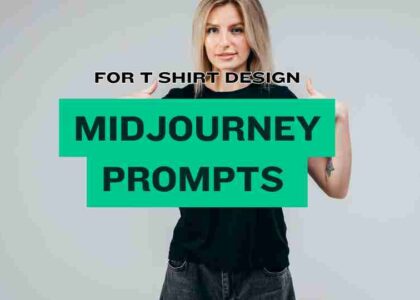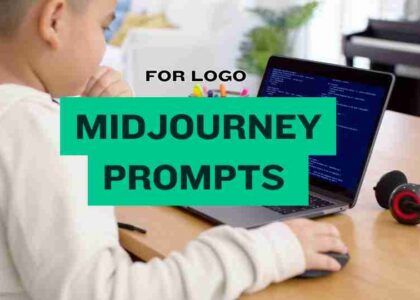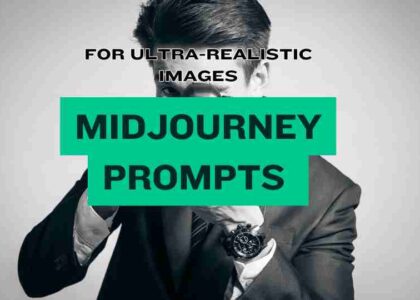How to Create MidJourney Prompts for Product Photography: A Complete Guide
Creating captivating product photos is essential for any business aiming to enhance its marketing strategy and visual appeal. With advancements in AI, tools like MidJourney V6 have revolutionized the art of product photography, making it easier than ever to generate ultra-realistic images. In this post, I’ll explore the best practices and techniques to effectively leverage MidJourney V6 for product photography, ensuring your images resonate with your audience and help you stand out in a competitive market.
Table of Contents
Understanding MidJourney Prompts for Product Photography V6
MidJourney V6 utilizes advanced algorithms to generate images based on carefully structured prompts. The quality of the output depends significantly on how effectively you craft your prompts, focusing on various aspects such as product description, style reference, and visual composition. Whether you’re a small business owner or a seasoned marketer, the ability to create professional product images with AI is a game-changer.
MidJourney Prompts for Product Photography Template
[Insert product details][Insert photography style][Insert lighting type][Insert shot type] [Insert background/setting] [Insert decor/props] [Insert mood/style] [Insert product details] [Insert effects] [Insert brand color/design elements] [Insert additional context].
The Essential MidJourney Prompt Structure
A well-crafted prompt is crucial for generating high-quality product photos. The better your prompt, the more likely you are to get an image that aligns with your vision. Here are the key components of an effective product photography prompt:
1. Keyword Focus
The first step is to set the tone and intent for the generated image. Start your prompt with “product photography,” which serves as the foundational keyword. This helps the AI understand the context and direction of the prompt.
Example: “Product photography of a luxury wristwatch”
2. Detailed Product Description
Describe the product in detail—size, shape, color, texture, material, and any other unique features. The more specific you are, the better the AI can recreate the image accurately.
Example: “Silver stainless steel wristwatch with a black leather strap, minimalistic design with silver hour markers”
3. Additional Keywords for Style and Technique
Consider incorporating keywords for different photography styles to guide the AI in capturing the right look. Depending on the style you’re going for, you might add:
- Commercial Photography: For professional, magazine-style photos with a clean, minimalist aesthetic.
- Still Life Photography: Focuses on classic, balanced displays of products with a clean composition.
- Macro Photography: Ideal for close-up shots that emphasize textures and intricate details.
Example: “Still life product photography of a luxury wristwatch on a polished wood surface, soft natural lighting, shallow depth of field”
Visual Comparisons for Effective Prompting
To maximize your understanding of different styles, use visual comparisons. Comparing how variations in keywords affect the aesthetic and composition can guide your decisions. Here’s a quick visual guide to consider:
- Commercial Photography: Minimalist compositions with simple, clean backgrounds—great for high-end products like watches or tech gadgets.
- Still Life Photography: Classic compositions with focus on the product’s form and texture. Often seen in advertisements for everyday items like bottles or cosmetics.
- Macro Photography: Extreme close-ups ideal for showcasing fine details in products like jewelry, food, or beauty products.
By experimenting with these styles, you can refine your approach and learn what works best for your products.
Advanced Techniques for Compelling Product Photography
Now that we’ve covered the basics, let’s dive into some advanced techniques that can make your product photos even more compelling.
Using Style References
MidJourney’s style reference parameter allows you to maintain consistency across your product line. For example, if you’re generating images for a range of beauty products (like lipstick, argan oil, and perfume), using a consistent style reference helps create a cohesive look across all the product photos.
Example: “Product photography of lipstick in soft lighting, vintage glamour style, high-end luxury aesthetic”
Incorporating Set Design and Backgrounds
The background plays a vital role in highlighting your product. The setting and context can enhance the mood and appeal of your photos. Consider the following ideas:
- Podium Design: Use structured prompts to suggest the product’s importance, whether it’s a minimalist studio setup or a more elaborate thematic environment.
- Background Choices:
- Solid Colors: Simple yet effective for drawing attention to the product.
- Gradients: Adds a modern, stylish vibe.
- Site-Specific Designs: For lifestyle products, you can specify backgrounds like a Mediterranean terrace or a clean, minimalistic workspace.
Example: “Product photography of a perfume bottle on a minimalist marble podium with soft gradient background, subtle shadows for depth”
Mastering Shot Types and Lighting
The angle of the photograph plays a significant role in directing the viewer’s attention. Use keywords to specify how you want the product to be captured.
- Shot Types: Consider specifying the angle, such as “top-down shot,” “side view,” or “close-up shot.”
- Lighting: Lighting can dramatically change the mood and appearance of the product. You can specify lighting conditions like “natural light,” “soft lighting,” or “dramatic lighting with strong contrasts.”
Example: “Close-up shot of a luxury fragrance bottle with soft diffused light, front angle, emphasizing the intricate details of the label”
Enhancing Product Appeal with Decorations
Adding decor elements around your product can help bring context and additional appeal, but it’s important not to overshadow the product itself.
- Decor Items: Use subtle props to enhance the scene, such as flowers for beauty products or tech accessories for gadgets.
- Composition: Pay attention to how you arrange the elements in the frame. Using the rule of thirds or other geometric principles can help create a balanced and engaging image.
Example: “Product photography of a luxury watch with a soft leather strap, displayed on a wooden table with delicate decorative plants around it”
Bringing Products to Life: Effects and Context
Adding dynamic elements to your product photos can make them more engaging and memorable.
- Effects: Use effects like splashes of water, floating objects, or even smoke to give life to your image. For example, showcasing a beauty product with floating petals can evoke freshness and elegance.
- Contextual Use: Showcasing the product in use by a model or in a relatable setting helps potential buyers envision the product in their own lives.
Example: “Perfume bottle with floating petals in a soft breeze, shot at golden hour, romantic ambiance”
Utilizing MidJourney’s Unique Features
Custom Zooming and Object Replacement
MidJourney V6 also allows for custom zooming and object replacement, which means you can refine your product images to get the perfect look.
- Using the Variations Feature: After generating an image, you can select areas to edit, ensuring the product looks just right.
- Product Replacement: Easily replace a generic product with your specific product to create a cohesive look across your brand.
Innovating with Product Packaging Design
Don’t forget that MidJourney can be used to generate product packaging concepts as well. This is a great way to explore design ideas before committing to actual packaging.
Example: “Product photography of a skincare bottle with modern, sleek packaging, minimalist label design”
Adding Your Touch: Inserting Custom Products
While MidJourney doesn’t natively support adding your custom products directly into generated images, tools like Remove BG or Magic Studio can help you extract your product from its original photo and insert it into your MidJourney scene.
Color Palettes as Style References
Maintaining brand consistency is crucial. Using color palettes in your prompts ensures that the product images align with your brand identity, helping create a cohesive aesthetic across your marketing materials.
Example: “Product photography of a smartwatch, with sleek metallic details and the brand’s signature black and gold color scheme”
Conclusion: Transform Your Product Photography
MidJourney V6 is a powerful tool that redefines the landscape of product photography. By mastering the practices outlined in this guide, you can create visually stunning and ultra-realistic product images that captivate your audience. Whether you’re in e-commerce, marketing, or product development, leveraging AI to create high-quality visuals has never been more accessible.
Embrace these techniques, bring your creative visions to life, and explore the boundless possibilities offered by MidJourney. Your product photos can now stand out and engage your audience more effectively than ever before.
Thanks to
CyberJungle for this video
Check more from our blog hire












One thought on “Midjourney prompts for product photography”